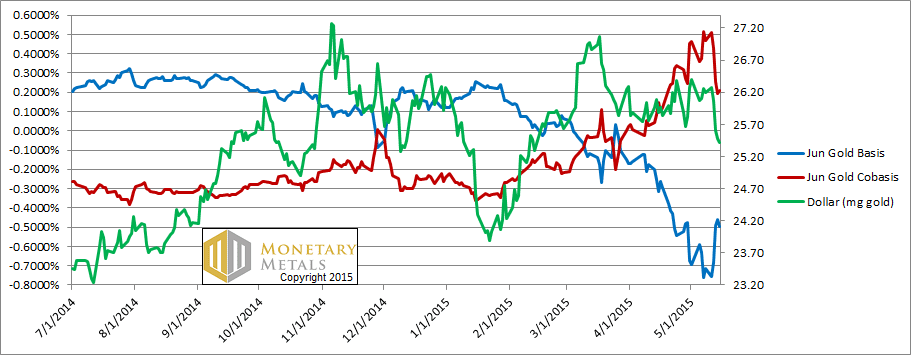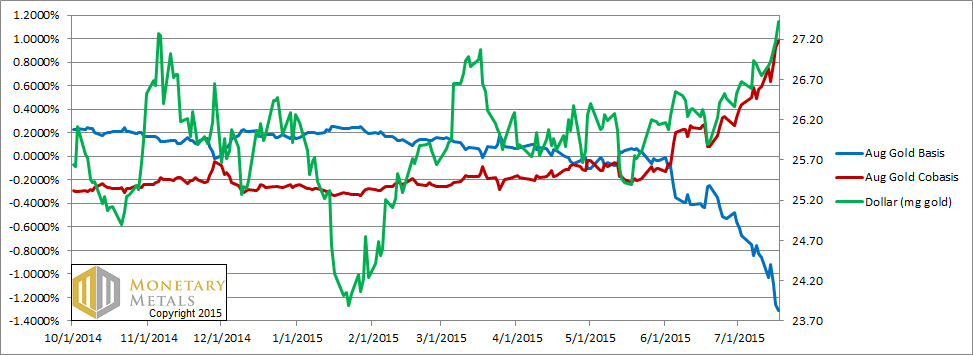Pr. Fekete and the New Austrian School of Economy have for many years advocated an unadulterated gold standard, based on gold coins, gold bills, gold bonds and their respective clearing houses.
Gold bills are a form of letters of credit (or bills of exchange) with a maturity of 3 months, and which can be settled in gold coins (or bullions).
Letters of credit are used since millenia. They were invented shortly after Cresus introduced the gold (or electrum) coins. Significantly, the oldest mentions of gold coins known in history are located in Anatolia (now part of Turkey) namely with Cresus and the river Pactole; and the oldest mention of letters of credit was written by Ciceron in 50 B.C. (in Epistulae ad familiares, book 3:5:4; here is one of the first translation from latin to old french, published 1542) about his travel in Laodicae, an important town in Cilicia (Anatolia).
Letters of credit have since been used in many different countries, together with the expansion of international trade. They have been widely adopted into what Adam Smith has described as being "real bills", underscoring that he has not invented them but only described in a doctrine their universal use. Fekete has demonstrated the relevance of Real Bills doctrine for an unadulterated, modern and resilient gold-based monetary system, calling them Gold Bills.
I have anticipated the increasing use of Gold Bills in international trade, replacing US dollar, writing specifically that the experience of Turkish banks in the international trade of Iranian oil during international sanctions will be a relevant knowledge.
Nowadays you can find on the largest Turkish bullion bank's web site a full range of banking services for using letters of credit in international trade :
A Letter of credit (L/C) is one of the payment types in foreign trade that provides the parties involved with more security. In other words, it is a conditional payment order issued by a bank upon the instruction of a buyer (applicant) in favor of a seller (beneficiary), via a foreign correspondent bank. Upon receipt of a letter of credit, the beneficiary realizes shipment of the stipulated goods and presents strictly complying documents to the correspondent bank and claims the credit amount. A letter of credit may be issued so that payment is to be effected against presentation of conforming documents (sight L/C), or at a certain maturity date (deferred payment L/C) or at the maturity of a bill of exchange accepted by either the issuing bank or the correspondent bank (acceptance L/C). In a letter of credit mechanism, a correspondent bank may assume the risk of the issuing bank, hence, that of the applicant which makes it a confirming bank.
Due to their reliability and internationally acceptability, letters of credit are widely used in import and export transaction.
Kuveyt Turk, with its widespread correspondent network and with its staff highly specialized in foreign operations, provides to its customers all kind of L/C transactions.
Kuveyt Turk’s Client is Exporter:
- Exporter countersigns the sales contact with the buyer.
- The buyer instruct his bank to issue a letter of credit complying with terms of sales contract.
- Exporter receives the letter of credit from Kuveyt Turk.
- The goods are shipped and/or services supplied. Shipping documents are presented by exporter to Kuveyt Turk’s branches subsequently.
- If documents are in compliance with credit terms and conditions, you are either paid or receive a payment undertaking to be paid at a future date, depending on the payment terms of the letter of credit.
- These documents are sent to the issuing bank.
- The buyer then uses these documents to clear the goods from customs.
Kuveyt Turk’s Client is Importer:
- Importer countersigns the sales contact with the buyer.
- Importer instructs Kuveyt Turk to issue a letter of credit in respect of conditions stipulated in sales contract.
- Professional and skilled staff of Kuveyt Turk issues the L/C.
- Seller ships the goods and/or supplies the services.
- Exporter presents the required documents to Kuveyt Turk through his bank, which is called as “presenting bank”.
- The seller is paid or receives a payment undertaking to be paid at a future date, depending on the payment terms of the letter of credit.
- Experts of Kuveyt Turk check the documents, debit your account in case that the L/C is available by payment at sight and documents are credit conforming, and subsequently deliver documents to the importer.
- Importer clears the goods from the customs.
The different types of L/C are:
Revocable L/C
Revocable L/C can be amended or cancelled at any time by the importer without the consent of the exporter. This option is not often used, as there is little protection for the exporter. According to UCP Rules, all letters of credit are irrevocable, unless otherwise stated.
Irrevocable L/C
Irrevocable L/C can only be changed or cancelled with the consent of all the parties. The seller must comply with the terms and conditions of the credit in order to receive payment.
Confirmed L/C
In some instances, exporters may request a credit to be confirmed by another bank, (usually a bank in their own country). If a bank adds its confirmation to a credit, it means that it is obliged to pay if the terms and conditions of the credit are complied with. This obligation to pay exists even if the issuing bank or country defaults.
Unconfirmed L/C
The advising bank forwards an unconfirmed letter of credit directly to the exporter without adding its own undertaking to make payment or accept responsibility for payment at a future date, but confirming its authenticity.
Sight Payment L/C
The issuing bank and confirming bank, if available, assume the irrevocable obligation on behalf of the buyer to effect immediate payment (at sight) to the beneficiary (the exporter) subject to the presentation of credit conforming documents within a prescribed period of time and fulfillment of any other applicable terms and conditions.
Deferred Payment L/C
The issuing bank and confirming bank, if available, undertake to effect payment at a specified later date (for instance, 180 days after the date of shipment) under a deferred payment L/C subject to the presentation of the credit conforming documents within the validity of the documentary credit. As such, the due date must be clear from the credit. The exporter thus grants the importer time to pay.
Negotiation L/C
Under L/C available by negotiation, the exporter receives an advance payment from the negotiating bank on presentation of the required documents. If negotiating bank does not act as confirming bank, it has the right to seek recourse from the exporter if cover is not received from the issuing bank.
Acceptance L/C
The accepting bank guarantees payment to the holder of the bill of exchange on maturity date regardless of whether the credit is confirmed or not. Draft is usually drawn on issuing bank if the credit is not confirmed and it is drawn on confirming bank if the credit is confirmed one.
Transferable L/C
This is normally used when the exporter is not supplying the goods and wishes to transfer all or part of the responsibilities under the credit to the suppliers. With a transferable credit, the first beneficiary posses the option to instruct the transferring bank to transfer the L/C to the end supplier (the second beneficiary) either in full or in part.
Red Clause L/C
This enables the exporter to obtain advance payment before shipment. This is provided against the exporter's certificate confirming its undertaking to ship the goods and to present the documents in compliance with the terms and conditions of the documentary credit.
Green Clause L/C
Similar to a Red Clause Credit, but in addition to pre-shipment finance the exporter also receives storage facilities at the port of shipment at the expense of the buyer. The exporter usually presents a warehouse receipt in addition to the other documents.
Revolving L/C
Revolving L/C is normally used where shipments of the same goods are made to the same importer. It is a Single L/C that covers multiple-shipments over a long period. Instead of arranging a new L/C for each separate shipment, the buyer establishes a L/C that revolves either in value (a fixed amount is available which is replenished when exhausted) or in time (an amount is available in fixed installments over a period such as week, month, or year). L/Cs revolving in time are of two types: in the cumulative type, the sum unutilized in a period is carried over to be utilized in the next period; whereas in the non-cumulative type, it is not carried over.






















%2Fa*100%2Ca%2Ca*0&fgst=lin%2Clin%2Clin&fq=Daily%2CDaily%2CDaily&fam=avg%2Cavg%2Cavg&vintage_date=%2C%2C&revision_date=%2C%2C)










